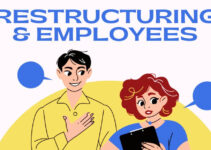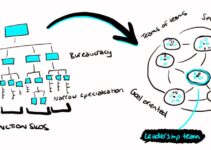Organizational change plays a significant role in the growth and productivity of businesses and companies. It happens when there is a change in people, systems, processes, technology, or structure. Today, we’ll discuss the types of change in organizational behavior.
Organizational behavior is the collective behavior of people or employees in the workplace or in the corporate setting and environment. When you analyze the collective behavior of employees in the workplace, it helps you to predict the performance and productivity of employees. Some of the main types of organizational behavior models are as follows;
- Custodial
- Supportive
- Autocratic
- Systematic
- Collegial
Types of Change in Organizational Behavior
Let’s discuss the main types of change in organizational behavior as follows;
Planned Change
As the name implies, planned changes help you to know when and how the changes would impact the organization. While implementing the planned change programs, managers should pay close attention to the change program and its impact, so that the management could take some effective measures and protocols.
Planned changes fall under the category of developmental changes because they help organizations to achieve their goals and objectives and improve the company’s existing state. It is calculative and it doesn’t put the future of the company in jeopardy, because you are taking every step cautiously.
Some of the key reasons for the planned changes are as follows;
I-Informal Organization Change
The informal atmosphere is very important in the formal setting of the business environment, and it plays a key role in motivating and satisfying people in the workplace. When the company’s leadership launches a change program that disturbs the informal setting and relationship among employees; they need to address the imbalance.
II-Formal Organization Change
The formal structure of the organization has a proper chain of command and predefined roles and responsibilities for the smooth running of daily operations. They should establish a proper line of communication for the interpersonal relationship among colleagues and employees. When the top management decides to change the organizational structure, then it changes the formal relationships among employees.
III-Managerial Personal Change
Change in management causes a lot of disturbance and imbalance in the organization. It could be in the form of retirement or a fresh appointment, then it would impact the programs, procedures, practices, methods, and processes of the company. It is because every new manager has their own method of working and running things, and employees have to follow the new management style.
IV-Business Conditions Change
If an organization changes its business conditions like industrial policy, business cycle, marketing practices, and system, or quality of the product; then it would cause an imbalance in the organization and also in the behavior of employees.
V-Procedures & Methods Change
Human beings are habitual creatures. It disturbs them if there is a change in the policies and practices that they are used to it. it would take them a lot of time and energy to make them feel comfortable in the new environment.
VI-Equipment & Machinery Change
Technological development brings a change in the form of new equipment, machinery, methods, processes, and equipment. For instance, installing automatic machines would replace the conventional methods, and it would also replace the traditional workforce with the new tech-oriented people.
Reactive Change
Reactive change is when internal and external factors force organizations and businesses to execute change programs immediately without any delays. It is a type of change that would happen when the demand for the product or service increases or decreases. It could be a response to the crisis and problematic situation whatever the organization is dealing with.
Example
Technological development is compelling organizations to adopt the latest methods of doing things. In such an environment, it is tempting for organizations to adopt the latest technology in order to gain a competitive edge. If the company has to adopt the latest technology at such a time when it is going through the crisis phase, then it would be a reactive change under such circumstances.
Proactive Change
Proactive change would happen when the management realizes some factors and chooses to implement the change program in the organization. They would properly plan and devise the change program. Some of the main differences between proactive and reactive change are as follows;
- The proactive change would address the reasons that are causing the symptoms; the reactive change would only respond to the symptoms
- The area reactive change covers is very small and limited; proactive changes would develop coordination with various parts of the system
- Proactive changes follow the purpose behavior; whereas reactive changes follow the reflective behavior
Reasons for Change in Organization
Internal Reasons
I-Organization Lifecycle
Just like human beings, organizations also go through a series of lifecycle stages like initial, growing, development, maturity, decline, and dead end. Organizations face different types of issues and challenges in every stage; or moving from one stage to another.
II-Dealing With Crisis
When organizations are facing different internal issues and crises like disobedience of employees, limited budget, high turnover, the resignation of managers, losing suppliers, and others. In such circumstances, the company has got no other choice but to launch radical changes in order to deal with the crisis.
III-Domino Effect
The domino effect means doing one action would cause you to bring changes in the others; resulting in the form triggering a series of changes. For instance, you start a Science Department, then it requires establishing a building, hiring teaching staff, buying equipment, and a series of other small things.
IV-Launching Technology
When a company decides to upgrade its system, equipment, tools, and machinery; then it would cause a lot of changes in the company’s internal environment.
V-Leadership Change
As the name implies, a change in leadership would cause panic and disturbance in the internal environment of the organization. It may be good or bad depending on the situation and circumstances.
External Reasons
Some of the top external reasons for the change in the organization are as follows;
- Changing people’s trends and preferences
- Technological development
- The highly competitive environment and the race of staying ahead of the competition
- Regulations and government rules and policies
Conclusion: Types of Change in Organizational Behavior
After an in-depth study of types of change in organizational behavior; we have realized that various types of factors and reasons impact the change in organizational behavior. If you are studying the types of change in organizational behavior, then you should keep in mind the abovementioned reasons and factors.
Ahsan is an accomplished researcher and has a deep insight in worldly life affairs. He goes Live 3 days a week on various social media platforms. Other than research writing, he’s a very interesting person.


